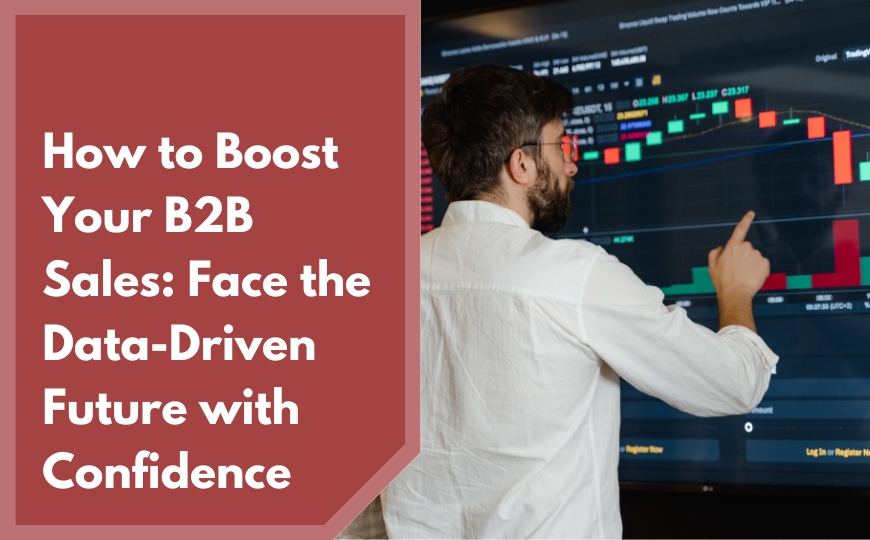As today’s business environment continues to move faster, data is now accepted as the backbone of modern B2B marketing. For companies looking to win more sales and gain a competitive edge in their respective industries, it’s not enough to simply procure data—such data must be effectively leveraged.
Specifically, decision makers within growing businesses are expected to act with precision and strategy to keep the momentum going. Furthermore, customers look for personalized and targeted marketing instead of generic tactics that were once accepted in the past.
To help your business face the future of marketing with confidence, it’s important to understand what has been fueling the shift in data-driven marketing. Better yet, in this blog, let’s explore how your company can stay ahead of the curve as industrial processes as a whole shift toward automated data handling.
The Rise of Data-Driven Marketing
B2B marketing has evolved rapidly over the last decade. The days of broad spray-and-pray efforts are over. In their place, data-driven tactics are taking hold.
According to Gartner, 73% of B2B marketers now rely on data to guide their marketing strategies. Why? In short, data eliminates guesswork. It enables precise targeting, refined messaging, and optimized campaigns—all of which lead to higher engagement and increased conversions.
By analyzing customer data, businesses gain critical insights into buyer behavior, decision-making patterns, and unmet needs. With this knowledge, your company can deliver the right message to the right audience at the right time.
The Typical Challenge in Handling Data
Despite the clear advantages, many B2B companies fail to fully harness their data’s potential. Let’s list several reasons why:
1. Data Silos Lead to Missed Opportunities
Customer data is often scattered across multiple systems and departments instead of housed in one central repository, creating a fragmented and incomplete picture of buyer behavior. Marketing, sales, and customer service teams end up working independently of each other, leading to inconsistent messaging, disjointed customer experiences, and missed revenue opportunities.
2. Good Strategy, But Poor Data
Even if your business has the best marketing strategy in the world, data that is inaccurate, outdated, or incomplete will undermine your efforts. According to Forrester, 21% of B2B marketers cite poor data quality as a major obstacle to achieving their goals. If your data is flawed, your insights are flawed—and so are your decisions.
3. Data is Useless Without Actionable Insights
Collecting data is only the first step. The real challenge is turning that data into strategic action. Many organizations lack the expertise or tools to analyze data effectively, leading to paralysis instead of progress. Without having the ability to extract clear and actionable insights, businesses lose their opportunity for empowerment and growth and easily become overwhelmed by data instead.
How to Leverage Data for Maximum Impact
To fully harness the power of data-driven marketing, your B2B company needs a holistic, integrated approach. Here’s how to get it right:
1. Eliminate Data Silos
Centralize your data so that marketing, sales, and customer service work from the same insights. A unified data strategy creates seamless customer experiences, more informed decision-making, and better cross-functional collaboration.
2. Prioritize Data Quality
Raw data is only valuable if it’s accurate and complete. Regularly audit and clean your data to ensure reliability. Invest in verification and enrichment tools to fill in missing details and maintain a high-quality, usable dataset.
3. Adopt Advanced Analytics & AI
Predictive analytics, artificial intelligence, and machine learning are game changers for B2B marketing strategy. These tools help companies identify patterns and trends, predict customer behavior, personalize outreach, optimize campaigns in real-time, and more.
4. Align Through Personalization
Personalized marketing is the key to engagement. More than ever, customers expect relevant and value-driven interactions that speak directly to their needs. By leveraging data to better align with your audience, your company can deliver messaging that resonates, offer content based on behavioral insights, and drive higher conversion rates.
Measure Success by Tracking and Optimizing Data
Data-driven marketing is only as effective as the metrics you track. Without clear Key Performance Indicators (KPIs), you’ll operate in the dark—and end up in a failed position once again.
Start defining your success within these categories by asking specific questions:
- Lead conversion rates: Are you turning data into revenue?
- Customer acquisition costs (CAC): Are you investing in the right strategies?
- Customer lifetime value (CLV): Are your efforts driving long-term growth?
- Engagement metrics: Are your campaigns resonating with your audience?
Data goes beyond reporting for constant optimization. Regularly conduct performance reviews to allow your business to double down on what works and aim for constant improvement by pivoting where necessary.
The Future Belongs to Data-Driven B2B Leaders
B2B marketing is changing fast, and companies that ignore data-driven strategies will fall behind. Your ability to extract insights, optimize campaigns, and personalize marketing at scale isn’t a competitive advantage—it’s the new standard for success.
Remember that data is the foundation of modern marketing. Are you ready to harness its full potential? Connect with our team of digital marketing experts to learn how to better make your data work for you. Contact us today for a tailored strategy that turns raw data into revenue.





